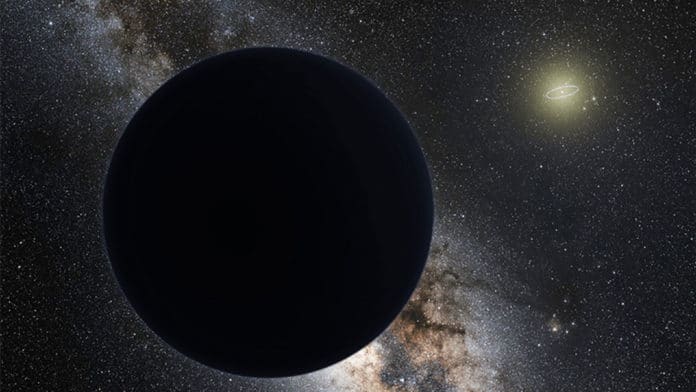Scientists at Harvard University, in collaboration with Black Hole Initiative (BHI), have developed a new approach to find black holes in the outer solar system. Along with this, they proposed a plan to determine once-and-for-all the true nature of the hypothesized Planet Nine.
Their new study highlights the potential of the future Legacy Survey of Space and Time (LSST) mission to observe accretion flares, the presence of which could prove or rule out Planet Nine as a black hole.
The newly developed method to find black holes in the outer solar system based on flares emitted from the disruption of intercepted comets. LSST can see black holes by observing accretion flares resulting from the objects.
Amir Siraj, a Harvard undergraduate student, said, “In the vicinity of a black hole, small bodies that approach it will melt as a result of heating from the background accretion of gas from the interstellar medium onto the black hole.”
Dr. Avi Loeb, Professor of Science at Harvard, said, “Once they melt, the small bodies are subject to tidal disruption by the black hole, followed by accretion from the tidally disrupted body onto the black hole. Because black holes are intrinsically dark, the radiation that matter emits on its way to the mouth of the black hole is our only way to illuminate this dark environment.”
“LSST has a wide field of view, covering the entire sky again and again, and searching for transient flares.”
Siraj said, “The new calculation could inform future searches for primordial black holes. This method can detect or rule trapped planet-mass black holes out to the edge of the Oort cloud, or about a hundred thousand astronomical units. It could be capable of placing new limits on the fraction of dark matter contained in primordial black holes.”
“Other telescopes are good at pointing at a known target, but we do not know exactly where to look for Planet Nine. We only know the broad region in which it may reside. LSST’s ability to survey the sky twice per week is precious. Also, its unprecedented depth will allow for the detection of flares resulting from relatively small impactors, which are more frequent than large ones.”
The new study mainly focused on the famed Planet Nine as a prime first candidate for detection. Planet Nine s a previously undetected planet, but it may also flag the existence of a planet-mass black hole.
Siraj said, “The upcoming LSST is expected to have the sensitivity required to detect accretion flares, while current technology isn’t able to do so without guidance. LSST has a wide field of view, covering the entire sky again and again, and searching for transient flares. Other telescopes are good at pointing at a known target, but we do not know exactly where to look for Planet Nine. We only know the broad region in which it may reside. LSST’s ability to survey the sky twice per week is precious. Also, its unprecedented depth will allow for the detection of flares resulting from relatively small impactors, which are more frequent than large ones.”
The focus on Planet Nine is based both in the unprecedented scientific significance that a speculative disclosure of a planet-mass black hole in the solar system would hold as well as the continued with interest in understanding what’s out there.
Loeb said, “Finding Planet Nine is like discovering a cousin living in the shed behind your home, which you never knew about. It immediately raises questions: why is it there? How did it obtain its properties? Did it shape the solar system history? Are there more like it?”
Journal Reference:
- Siraj et al., Searching for Black Holes in the Outer Solar System with LSST. arXiv:2005.12280v2 [astro-ph.HE]. arxiv.org/abs/2005.12280
